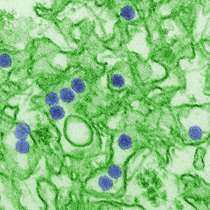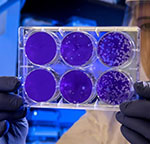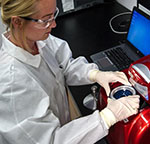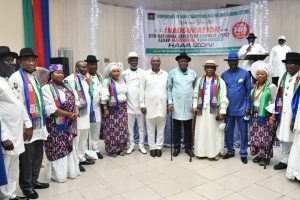The Centers for Disease Control and Prevention Technology Transfer Office (TTO) partners with industry, academia, non-profits, and other government agencies to transfer CDC’s research portfolio into products and services to improve public health.
Flaviviruses such as Zika virus, dengue virus, West Nile virus, yellow fever virus, and Japanese encephalitis virus cause widespread illness and death throughout the world. Typically, flaviviruses get transmitted through the bite of infected mosquitoes and ticks.
CDC has identified and characterized distinct flavivirus cross-reactive epitopes (specific pieces of the antigen to which an antibody binds) that can improve serodiagnosis and vaccination against flaviviruses. CDC’s new flavivirus VLPs have structural proteins as the basis to form the viral particles. They do not have a viral genome so they are non-infectious.


For the base, CDC researchers adapted human embryonic kidney 293 (HEK-293) cells, which are FDA-approved for use in producing biologics, in a serum-free and animal protein-free culture media, then propagated these as suspension cells. Researchers introduced an optimized plasmid to form the virus-like particles (VLPs) or non-structural protein 1(NS1) into the cells and selected stably expressing cell populations for use to produce diagnostic antigens or immunogens for human and animal flavivirus vaccines. CDC’s method of selecting cell lines does not use an antibiotic to obtain the VLP- or NS1-expressed HEK-293 cell clone versus traditional clonal selection methods which rely on antibiotics. CDC inventors further optimized the cell lines for stability over time. Some VLP-expressed clones to date have stayed in continuous culture and maintained VLP expression level for a year without sign of gene expression deterioration. Thus far, some in vivo data is available in rabbits and mice. Partners can incorporate the technology directly into a manufacturing pipeline for vaccines, biologics, or diagnostics.
Commercial Applications
For use in human and animal vaccine and biologics development against flaviviruses such as dengue virus, yellow fever virus, Zika virus, Japanese encephalitis, West Nile virus, Japanese encephalitis virus, St. Louis encephalitis virus, Powassan virus, and others
Improved serological diagnostics for flaviviruses in humans and animals and adaptable to kit format
Public health monitoring and surveillance for flaviviruses
Quality assurance and quality control for vaccine development
Research and development
Competitive Advantages
Suitable for use as human and animal vaccines and diagnostic antigens
VLP strategy has proven effectiveness in CDC’s West Nile virus (WNV) and dengue vaccine development
Some of these antigens are being utilized in commercially available FDA-approved diagnostic test kits
Stable over time (e.g., some clones for a year) without sign of gene expression deterioration
Produced from FDA-approved cell lines
Selected without antibiotics and propagated in a serum-free and animal protein-free culture media Partners can directly incorporate the cell lines into a manufacturing pipeline for vaccines, biologics, or diagnostics























